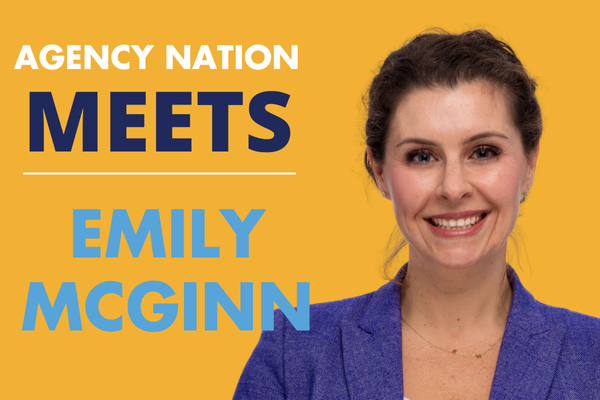Top 4 Data Problems in the Smart Home Telematics Space

By: Jacquelyn Connelly
Besides privacy concerns, another major roadblock lurks under the shiny sex appeal of smart home telematics: big data.
Here are the top four data problems facing insurance organizations that are investing in smart home telematics products and services:
Adoption is low—for now. Gwenn Bézard, Aite Group co-founder, research director and insurance practice leader, says this is the No. 1 data challenge in the smart home telematics space.
“The adoption of IoT [Internet of Things] devices in the home specifically is still in the low single digits or low double digits at best,” Bézard points out. “You walk into Best Buy or check out smart home devices on Amazon, they’re there. There are many of them, and lots of normal consumers are aware of them. But it’s still a bit complicated.”
Although adoption is certain to pick up in the years ahead, current numbers make some insurers question the value of investing in smart home products and services. “As an insurance company, you want a solution that can cover 100% of your insureds—not just 5% of the geeks in your customer base,” Bézard says. “Adoption is going to grow, but it’s going to be a bumpy road.”
Nobody’s sharing. Despite the mountains of data the IoT will generate, “the companies that have the data don’t necessarily want to share it with insurance companies,” Bézard says. “That means insurance companies need to partner or find ways to get ahold of the data, or maybe they have to deploy their own devices.”
Stephanie Trunzo, chief operations officer, chief data officer and partner at PointSource, a mobile design and development firm, suggests insurance organizations work with data architects “who really understand what is useful and what isn’t”—particularly because valuable data is bound to extend beyond the borders of proprietary data, or the data you own.
Consider a home that contains water sensors: Data pours in not only from the water sensors the insurance company is monitoring, but also data feeds the insurer doesn’t control, such as open weather data feeds.
“You could be monitoring information to understand the intersection between weather data that tells you there’s been a storm in this particular area and provides geo-location information,” Trunzo explains. “That’s going to give you a much fuller picture if that water sensor goes off. Is it likely to get worse because the storm is going to continue for six more hours? Or is it because a pipe burst and there is no weather event that’s causing it?”
Partnerships, then, will become central to the insurance industry’s role in the smart home telematics space. “I don’t believe today that any individual insurer has enough market share or volume of customers using connected devices and sharing data that, in a vacuum, they can actually derive intelligent, statistically sound predictive analytics or insights,” says Drew Doleski, product leader – IoT, connected home at Verisk Insurance Solutions. “I don’t think anybody is in a position to do that on their own. The data is unstructured across manufacturers. There’s a lot of noise.”
Inconsistency. That’s the foundation of the next major data problem insurance organizations face: the need for centralization. Today, many connected devices operate through their own individual apps—and “that’s not what consumers want,” says Jessica Groopman, research director and principal analyst with Harbor Research. “Consumers want convenience. They don’t want to have one app for a door lock and another for the security systems. There’s a need to integrate and create a central control system.”
“It’s about normalizing the data across all the devices and getting a stream of data that, over time, still makes sense,” Bézard agrees. “If you try to look at the number of steps you walk today on your smartphone versus a FitBit or Apple Watch, all those devices give you a different reading. When you have potentially dozens and dozens of devices to read from across millions of houses, you have to maintain that stream of data and make sense of it, even though those devices are so imperfect.”
In the same vein, data consistency will be a major issue for customers who decide to shop around. “Let’s say you have a device partnership with one insurer and you end up switching carriers a few years down the road,” Doleski points out. “There’s no guarantee that the device you’ve grown super accustomed to using on a daily basis is going to deliver the same type of premium discount—or for that matter, anything—with your next carrier.”
‘The hoarder mentality.’ Finally, perhaps the most important question of all: Which data actually matters? “There’s a lot of data provided by all the IoT devices, but the time you shut off your light may not be very interesting from an insurance standpoint,” Bézard says. “Insurance companies care about claims, so they need to tie all the data provided by the devices to actual claims and try to see what’s actually predictive of claims.”
John Lucker, advisory principal at Deloitte & Tousche and Global Advanced Analytics Market Leader, calls it “the hoarder mentality.”
“That’s being rethought by a lot of companies now, because we can’t capture every millisecond of all these different variables and expect to transmit all that over a cellular network,” Lucker says. “It’s too much data. Just because we can gather it doesn’t mean we need to. You don’t really need to know the temperature in a house every five seconds.”
The first step toward a solution will likely involve crafting smarter sensors that help digest data before it flows back to the mothership, Lucker predicts. “The way that problem has been largely solved on the auto telematics side is that rather than using the dongles in the car, you use a smartphone,” he explains. “Since it’s a computer, the smartphone can take that massive amount of data and act as an intermediary, digesting it into a smaller subset of data that’s closer to what the company needs to use, then sending a greatly reduced data set through either cellular or Wi-Fi transmission.”
“We talk to our clients a lot about how to distill the signal from the noise, because it’s just so much data,” Trunzo adds. “It’s about understanding the different data sources you’re going to need to come up with an intelligent solution, rather than just collecting data for the sake of data—which doesn’t tell anyone anything.”
Jacquelyn Connelly is IA senior editor.










